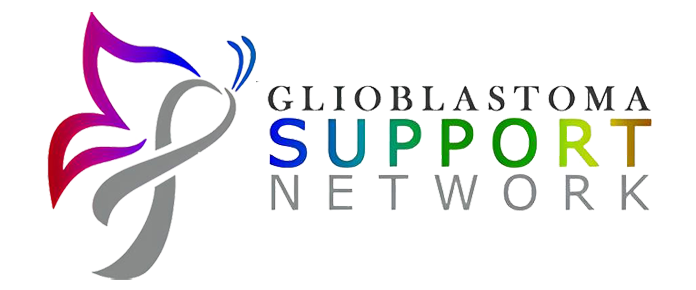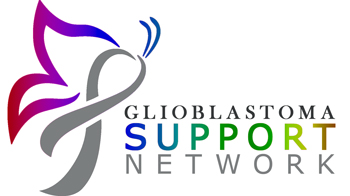Terminology
Your online resource for partners and caregivers
Important
Definitions & Acronyms
- ABTA-American Brain Tumor Association
- Anti-epilepsy medications- medications to prevent seizures [Keppra; levetiracetam] (ABTA.org, 2014.)
- Benign tumor- tumor that does not have the ability to metastasize (ABTA.org, 2014).
- Blood Clots- “A mass of blood that forms when blood platelets, proteins, and cells stick together. When a blood clot is attached to the wall of a blood vessel, it is called a thrombus. When it moves through the bloodstream and blocks the flow of blood in another part of the body, it is called an embolus” (NIH, n.d.).
- Brain Mapping- (Mazziotta, 2001, p. 1).
- Caregiver
- Cerebellum-area of the brain that controls balancer and coordination (ABTA.org, 2014).
- Chemotherapy- “a six-week course of temozolomide [TMZ] is given concurrently with radiation (ABTA.org, 2014, p. 11).
- Clinical Trials- “Clinical trials test the safety and effectiveness of treatments that have already shown significant promise in laboratory studies. For patients, they provide access to therapies that would otherwise be unavailable. All clinical trials, conducted in phases – I, II and III – are overseen by government and local hospital boards, and are subject to rigorous regulation and oversight (ABTA.org, 2014, p. 15).
- Craniotomy- “Surgery to remove a brain tumor is carried out by making an opening in the skull over the tumor” (ABTA.org, 2014, p. 9).
- CT Scan- computerized tomography (can be with or without contrast).
- Dexamethasone- is a steroid used to treat swelling (ABTA.org, 2014.)
- Dysphagia- difficulty swallowing (NIH, n.d).
- Edema- “swelling around the tumor” (ABTA.org, 2014, p. 12).
- Frontal Lobe- area of the brain where thought, reasoning, behavior, movement and memory are controlled (ABTA.org, 2014).
- Functional MRI – (fMRI) measures the brain activity by measuring blood flow within the brain.
- GBM-“Glioblastoma Multiform (also called GBM) are malignant Grade IV tumors, where a large portion of tumor cells are reproducing and dividing at any given time. They are nourished by an ample and abnormal tumor vessel blood supply. The tumor is predominantly made up of abnormal astrocytic cells, but also contain a mix of different cell types (including blood vessels) and areas of dead cells (necrosis). Glioblastomas are infiltrative and invade into nearby regions of the brain. They can also sometimes spread to the opposite side of the brain through connection fibers (corpus callosum)” (ABTA.org, 2014, p. 4).
- Grade- tumors are rated/grouped by their rate of growth.
- High Grade- rapid growth (encompass grade III-IV gliomas).
- Hospice Care
- IDH Mutant- mutated enzymes
- IDH Wildtype
- Immunotherapy- “area of treatment designed to trigger the body’s own immune system to fight and halt tumor growth” (ABTA.org, 2014, p. 14).
- Li-Frameni*- a rare genetic disorder that can cause GBM (ABTA.org, 2014).
- Low Grade- Slow growth.
- Malignant/anaplastic- high grade growth.
- Medulla
- Metastasize-tumor that does have the ability to spread to different locations in the body.
- Methylated MGMT- Inactive gene promoting methylation (Fernandes, C., et al., 2017).
- MGMT- DNA repair enzyme which promotes methylation (Fernandes, C., et al., 2017).
- Mid Grade- Moderate growth.
- MRI- Magnetic resonance imaging
- Necrosis- dead cells.
- Neuro-oncologist- a medical doctor who specializes in diagnosing and treating brain tumors and tumors of the nervous system (NIH, n.d.).
- Neuro-Surgeon
- Neurofibromatosis*- a rare genetic disorder that can cause GBM (ABTA.org, 2014).
- Neurological Exam- an exam that checks the functioning of your neurological system (vision, balance, reflexes etc.) (NIH, n.d.).
- Neurologist- a medical doctor that specializes in Neurology; able to diagnose, treat, and manage disorders of the brain and nervous system (NIH, n.d.).
- Occipital Lobe- on the left side of the brain the occipital lobe controls speech, motion, and sensation. The right side occipital lobe controls abstract concepts (for right-handed individuals, and vision (ABTA.org, 2014).
- Occupational Therapy (OT)
- Oncologist- “a doctor who has special training in diagnosing and treating cancer” (NIH, n.d.).
- Palliative Care
- Parietal Lobe- area of the brain that controls sensory perception, spatial relations, and sensation (ABTA.org, 2014).
- Physical Therapy (PT)
- Pons- “connects the cerebral cortex with the medulla and contains nerves and nerve tracts (pathways) that integrate brain functions such as movement and sensory messages between the brain and the body” (Vega, J,. 2020, p. 1).
- Primary Brain tumor- Brain tumor that develops in the brain (de novo)
- Proton beam therapy- is an alternative form of concentrated radiation (ABTA.org, 2014).
- Prognosis- “means a prediction of outcome. This information is usually based on information gathered from groups of people with the same disease” (ABTA.org, 2014, p. 17).
- Radiation- “Conventional fractionated external beam radiation is “standard” radiation given five days a week for five or six weeks. External beam radiation is actually the same radiation you get with a simple chest X-ray. Conventional radiation for high-grade astrocytomas is usually aimed at the tumor site and the area around the tumor” (ABTA.org, 2014, p. 10).
- Radio-oncologist (Radiation-Oncologist)- “specializes in treating cancer with radiation” (NIH, n.d.).
- Recurrence- a term used to describe treatment not being effective allowing new tumor growth (ABTA.org, 2014).
- Rehabilitation
- Secondary Brain Tumors- are tumors that do not develop in the brain 1st (ABTA.org, 2014).
- Seizures- “Sudden, uncontrolled body movements and changes in behavior that occur because of abnormal electrical activity in the brain. Symptoms include loss of awareness, changes in emotion, loss of muscle control, and shaking. Seizures may be caused by drugs, high fevers, head injuries, and certain diseases, such as epilepsy” (NIH, n.d).
- Speech Therapy (ST)
- Standard of Care- “maximal surgical resection, followed by radiotherapy plus concomitant and maintenance temozolomide (TMZ)” (Fernandes, C., et al.,2017, p. 1). Additionally,
- Steroids- “are drugs used to decrease swelling (edema) around the tumor” (ABTA.org, 2014, p. 12).
- Strokes- “In medicine, a loss of blood flow to part of the brain, which damages brain tissue. Strokes are caused by blood clots and broken blood vessels in the brain. Symptoms include dizziness, numbness, weakness on one side of the body, and problems with talking, writing, or understanding language. The risk of stroke is increased by high blood pressure, older age, smoking, diabetes, high cholesterol, heart disease, atherosclerosis (a buildup of fatty material and plaque inside the coronary arteries), and a family history of stroke. Also called cerebrovascular accident and CVA (NIH, n.d.).
Incontinence- “Inability to control the flow of urine from the bladder (urinary incontinence) or the escape of stool from the rectum (fecal incontinence) (NIH, n.d.). - Temozolomide (TMZ)- also known as Temodar, “is an alkylating agent with reasonable blood-brain barrier penetration” (ABTA.org, 2014, p.11).
- Temporal Lobe- area of the brain that controls behavior, memory, hearing and vision pathways and emotion (ABTA.org, 2014).
- Tuberous Sclerosis*-a rare genetic disorder that can cause GBM (ABTA.org, 2014).
- Turcot*- a rare genetic disorder that can cause GBM (ABTA.org, 2014).
- Von Hippel-Lindau*- a rare genetic disorder that can cause GBM (ABTA.org, 2014).
*“The majority of brain tumors are not hereditary.
Brain tumors can be caused by a genetically inherited syndrome, such as Neurofibromatosis, Li-Frameni, Von Hippel-Lindau, Turcot and Tuberous Sclerosis, affecting only 5% of patients” (ABTA.org, 2014, p.7).
References:
ABTA.org. (2014). American Brain Tumor Association; Glioblastoma and Malignant Astrocytoma. Retrieved from:https://biak.us/wp-content/uploads/2016/06/Glioblastoma.pdf
Fernandes, C., Coasta, A., Osorio, L., Carvalho, B. &. Caeiro, C. (2017). Current Standards of Care in Glioblastoma Therapy. Retrieved from: https://www.ncbi.nlm.nih.gov/pubmed/29251860
NIH. (n.d.). National Cancer Institute; NCI Dictionary of Cancer Terms. https://www.cancer.gov/publications/dictionaries/cancer-terms/def/
Vega, J. (2020). Stroke and the Pons Region of the Brain. Retrieved from: https://www.verywellhealth.com/what-is-the-pons-3146161


